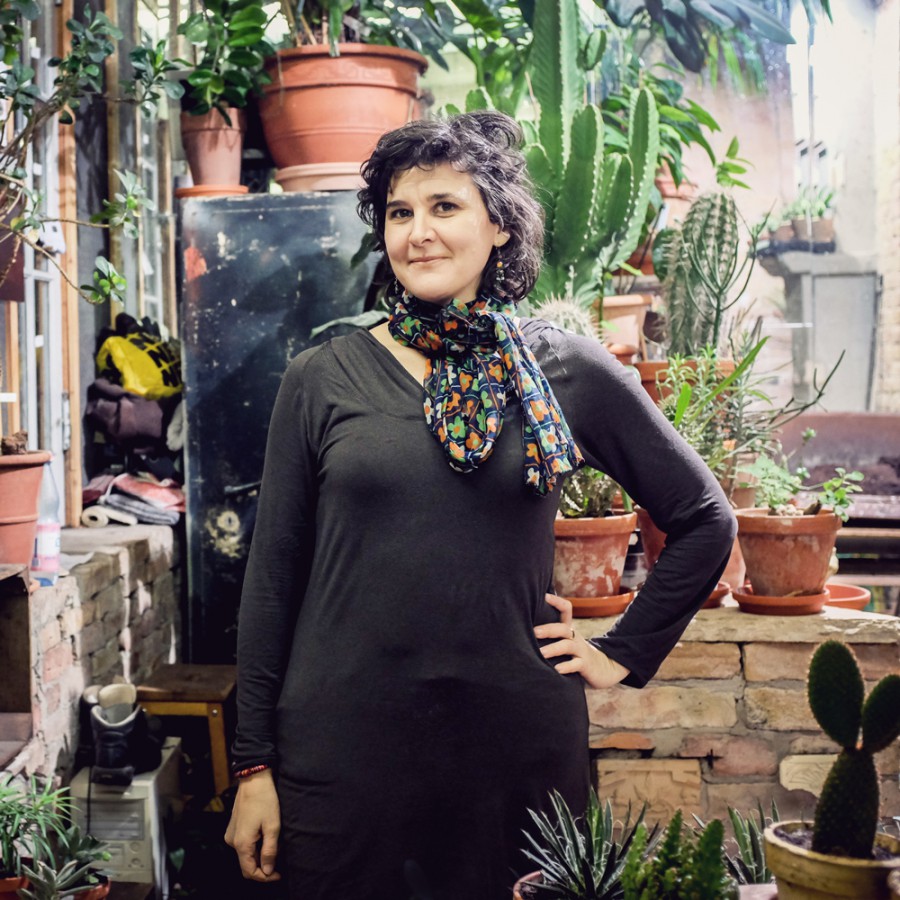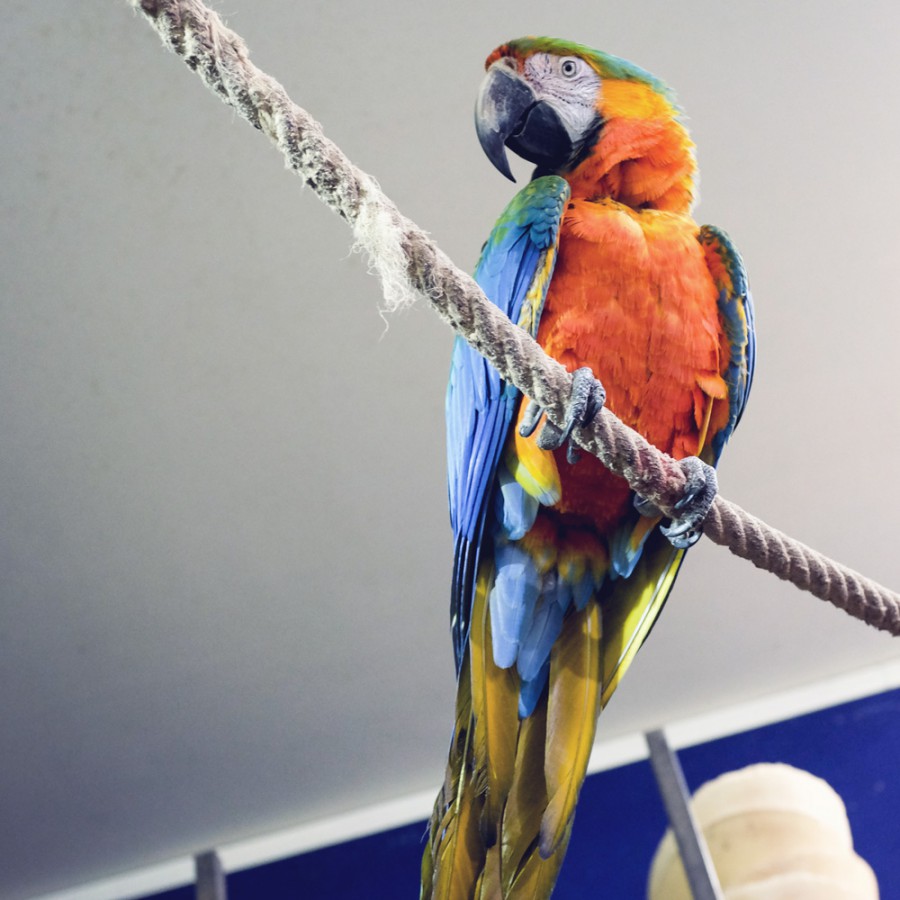Julie Perron, filmmaker from Quebec screened her film Le Semeur (The Sower) at this year’s Berlinale Film Festival as part of the Culinary Cinema section. The film was screened alongside Nora Mandray’s short film, 3 Acres in Detroit. Le Semeur is a portrait of Patrice, a dedicated grower and artist living on his farm, La Société des Plantes in the Kamouraska Valley, rural Quebec. Patrice’s concern is for plant biodiversity – on his farm, he propagates and preserves rare and forgotten seeds and is wholly committed to restoring variety and diversity to our agricultural heritage.
Patrice is a pioneer, planting seeds as an act of resistance – rejecting capitalism and consumerism in favour of going back to one’s roots, literally.
A few days after the Berlinale screening, we met up with Julie for a chat before she headed back to Quebec.


What attracted you to Patrice?
His complexity. He’s an artist, a gardener and an agronomist. But first of all, Patrice is a daydreamer with brilliant ideas.
How did you know he’d be the ‘one’ for your film?
At first I was interested in people who want to preserve a certain type of vegetable, or a culinary process – like a type of cheese in Argentina or a pineapple in Thailand. My first idea was to make a collage film focused on a few people in different countries. My previous films have been focused on just one person but I decided I wanted to discover more than one person and link them using the same subject…but I failed. I met the first one (Patrice), and I was stuck with him because he was so interesting.
He has a great generosity and our characters are very complimentary. We’re the same age, we both come from Montreal, he was once an urbanite, like me. It was pleasant just to be with him and to share the time with him. Slowly I started to tell myself that I have to stay with him in his amazing garden. Visually, I knew I could make a nice film – that was my goal. All of my other films included a lot of talking and archive footage, more like talking heads. In terms of cinematography, they weren’t well made or to my taste. It was my goal to create an aesthetically pleasing film and the subject was perfect.
What did you think of 3 Acres in Detroit, the film shown before your screening?
I feel they have a good beginning – a nice character. He’s a utopian guy (Donny), like Patrice, he’s a visionary. I’m interested to see the other characters that come up in their project (DIY Manifesto). The fall of Detroit is dramatic. They thought too much about profit, Donny has ideas but he’s a marginal guy, nobody will want him as the Mayor of Detroit but probably he’d do a better job.
How did Patrice react to the camera always focused on him?
You know, it’s strange because at first he was more natural and generous but the more I was filming him, the more upset he became – it’s not easy to always have a camera on you. At first he was probably thinking, “maybe she’s going to stay here for just one summer” so he was very willing (it took four years to make the film, starting in 2009, filming every season up unto 2012). Patrice moves quickly and it took a long time for us to understand what his next move would be. My DOP (Director of Photography) needed to understand how he’d move. He’d be walking fast then dancing! But it was very pleasant. He was very involved, I told him I wanted him to create the procession of the bean again so I could film it and he was very quick to organise everything. He’s an artist, for him it was an occasion – an opportunity.
How has Quebec influenced your filmmaking?
First of all we have a tradition in documentary in Québec with the NFB (National Film Board of Canada). I began at NFB and a lot of my filmmaking influences come from Québec “cinema direct”. Also I travel a lot and I’ve come to think Quebec is one of the best places to live as a creative woman. We are free to be who we want, there’s little social pressure, its possible to get funding- if you have ideas and you want to work, you can do it with freedom. It’s not easy, I don’t want to say that, but it is possible. I love where I’m from, Quebec has given me a good foundation to go further and that’s important in life.
Patrice has a lot of control over everything – like clamping the flowers shut in the morning to prevent cross-pollination (referred to by Patrice as ‘chastity belts’).
All the plants are his children; he feels great concern for all of them and their preservation. The inside of his house is full of seeds and on the outside are his plants. I think how crazy it’d be to put water in between the floorboards of the house, (there are so many seeds scattered around the floor), then leave the house for five years. How would the house look…But he’s not going to leave!
It must be a beautiful place to work?
Visually it’s beautiful but it’s a lot of work – you are working day and night. Nature is not waiting – your e-mails can wait, you can cancel appointments but you cannot forget your plants – they need water, you have to be aware of everything. This is one thing I learnt whilst making this film. Patrice works a lot. He gets up at early and goes to sleep late, seven days a week. You’ve got to be in good health, it’s so physical.
Will you revisit the themes in Le Semeur in your future work?
Not directly, but I might surprise you. Before making Le Semeur, I met an Archaeobotanist in Greece who’d found seeds from the Neolithic period. Originally, in my mind, Le Semeur’s first scene was shot on an archaeological field in Greece but the scene just didn’t work as I thought it would – it was a completely different universe to Patrice’s farm in Quebec. I spent three days making this film, I have 15 hours of material with which I’ve made a 14 minute film – it’s a portrait of a female archaeobotanist. I want to return to the footage to make a collage film and shoot there again with a group of archaeologists who are all working on this archaeological field.
If this has interested you, check out Patrice’s website – you can also buy seeds here! Posted by Lillie in June 2014.